As opposed to representational art, which aims to represent a depiction of a visual reality; abstract art, in the strict sense, bears no trace of anything recognizable in the natural world. Though abstraction in art has been known to exist in many cultures from ancient times, abstract art as a movement originated in early 20th century with its most prominent leader being the Russian artist Wassily Kandinsky. His untitled painting, now renowned as the First Abstract Watercolor, is one of the first artworks to shed all references to known forms thus emerging out of the limitations posed by the representational traditions of western European painting. Abstract art went on to dominate the art world in the 20th century contributing some of the best known artworks of the era. Here are the 10 most famous abstract paintings. We have excluded several famous works which are considered partially abstract like O’Keeffe’s flower close-ups and Kooning’s distorted portraits.
#10 Movement in Squares

| Location: | Hayward Gallery, London |
| Artist: | Bridget Riley |
| Year: | 1961 |
| Genre: | Op Art |
Op art, short form for optical art, is a genre in abstract art in which the artist creates an optical illusion through precise manipulation of patterns, shapes and colors. Bridget Riley, one of Britain’s leading artists since the 1960s, is perhaps the most famous Op artist after Victor Vasarely. In this painting she portrays a checkerboard which distorts and accelerates as it approaches the middle creating an illusion of depth and providing a sense of movement. Movement in Squares is the most renowned work of Bridget Riley and perhaps the most famous painting in Op art.
#9 Abstrakte Bilder series
![Abstraktes Bild [599] (1986)](https://learnodo-newtonic.com/wp-content/uploads/2017/12/Abstraktes-Bild-599-1986-Gerhard-Richter.jpg)
| English Title: | Abstract Images series |
| Location: | Various Museums |
| Artist: | Gerhard Richter |
Gerhard Richter is a German artist considered by some as the greatest living painter. He has created a wide variety of work and his art cannot be put under one particular genre. Among Richter’s most famous works is his Abstrakte Bilder series. He painted the first work titled Abstrakte Bild in 1976 and continued making many such works in the following two decades. In his abstract pictures, Richter builds up cumulative layers of non-representational painting. He begins with brushing big swaths of primary color onto canvas. The paintings evolve in stages, based on his responses to the picture’s progress: the incidental details and the patterns that emerge. In February, 2015, one of the paintings of the series, Abstraktes Bild [599] was sold for $44.52 million (£30.4 million), the highest price paid for a painting by any living European artist at the time.
#8 Orange, Red, Yellow

| Location: | Private Collection |
| Artist: | Mark Rothko |
| Year: | 1961 |
| Genre: | Color Field Painting |
Mark Rothko is considered a pioneer of Color Field painting, a style within Abstract Expressionism in which color is the main subject itself. Among his best known works are canvases in which he uses symmetrical rectangular blocks of two to three contrasting, yet complementary, colors. Orange, Red, Yellow is one such work which has been called “the most powerful of all his pictures”. A renowned masterpiece of Color Field painting, it was sold at Christie’s in May 2012 for $86.9M, breaking the record for the highest price paid for a contemporary artwork at a public auction.
#7 Bleu II
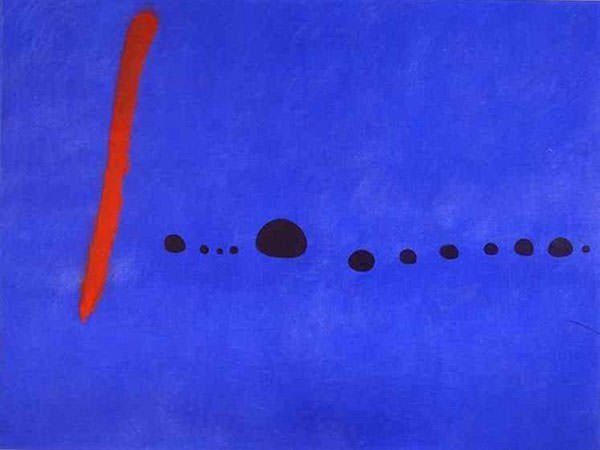
| English Title: | Blue II |
| Location: | Musée National d’Art Moderne, Paris |
| Artist: | Joan Miro |
| Year: | 1961 |
Joan Miro was an influential Spanish artist who was more closely linked to Surrealism but who also painted several abstract masterpieces which are considered a precursor to Abstract Expressionism. His most famous abstract artwork is the Triptych Blue I, II, III consisting of three enormous 355 cm x 270 cm paintings. All three paintings consist of simple lines and shapes on a dreamy blue background. In Blue II, Miro includes a dynamic red line on the left side of the painting in contrast to the serene blue background. The Bleu Triptych is considered a masterly achievement in abstract art and Bleu II is the most renowned of the three paintings.
#6 Mountains and Sea

| Location: | National Gallery of Art, Washington, D.C. |
| Artist: | Helen Frankenthaler |
| Year: | 1952 |
| Genre: | Lyrical Abstraction |
Lyrical abstraction was a term coined to define art which signaled a return to personal expression as opposed to Geometric abstraction and Minimalism. Helen Frankenthaler is one of the most famous female abstract artists and a foremost exponent of lyrical abstraction. Mountains and Sea, her first professionally exhibited work, is also her most renowned painting and a prime example of lyrical abstraction. It was the first work she created using her celebrated soak-stain technique in which she poured turpentine-thinned paint onto canvas, producing luminous color washes that appear to merge with the canvas.
#5 Broadway Boogie Woogie
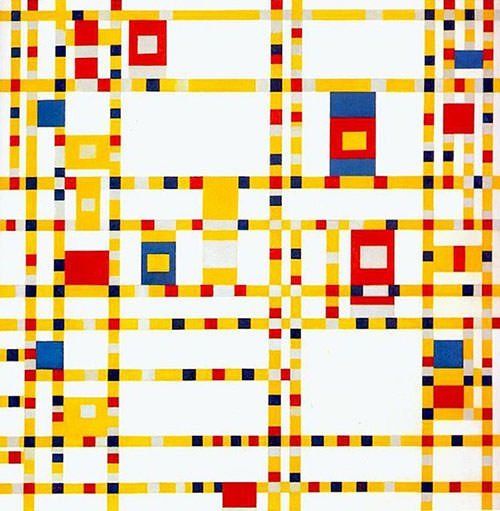
| Location: | Museum of Modern Art, New York City |
| Artist: | Piet Mondrian |
| Year: | 1943 |
| Genre: | Geometric Abstraction |
Geometric abstraction is a form of abstract art based on the use of geometric forms. Piet Mondrian coined the term neoplasticism for his abstract geometric paintings in which he only used the straight line, the three primary colors, and the neutrals of black, white and gray. Mondrian’s last complete painting, Broadway Boogie Woogie is inspired by the city grid of Manhattan and the Broadway boogie woogie music, which Mondrian loved. The painting is considered the pinnacle of Mondrian’s representation using his pictorial vocabulary of lines, squares and primary colors. It marks the culmination of his stylistic innovation and is one of the most influential artworks in the school of abstract geometric painting.
#4 Number 11, 1952 (Blue Poles)
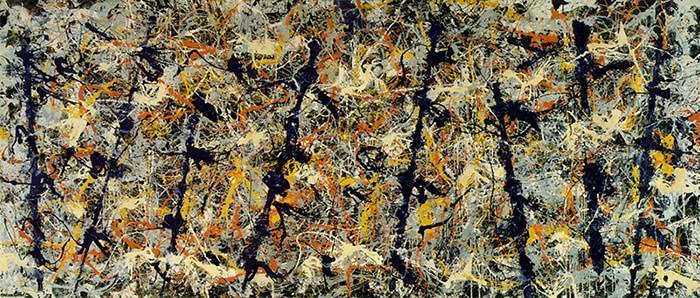
| Location: | National Gallery of Australia, Canberra |
| Artist: | Jackson Pollock |
| Year: | 1952 |
| Genre: | Drip Painting |
Drip painting is a form of abstract art in which paint is dripped or poured onto the canvas, rather than being carefully applied. Jackson Pollock is the most famous practitioner of drip painting to the extent that he was dubbed “Jack the Dripper” by TIME magazine. Among his most famous works, Blue Poles was purchased by the National Gallery of Australia in 1973 for A$1.3 million, a then world record for a contemporary American painting. Newspapers in Australia lambasted the purchase with headlines like ‘$1.3m for dribs and drabs’. There was a political scandal resulting in much public discussion which made the painting popular. Today Blue Poles is one of the major paintings in the collection of the National Gallery of Australia and its purchase is considered a masterstroke.
#3 Composition VII
| Location: | Tretyakov Gallery, Moscow, Russia |
| Artist: | Wassily Kandinsky |
| Year: | 1913 |
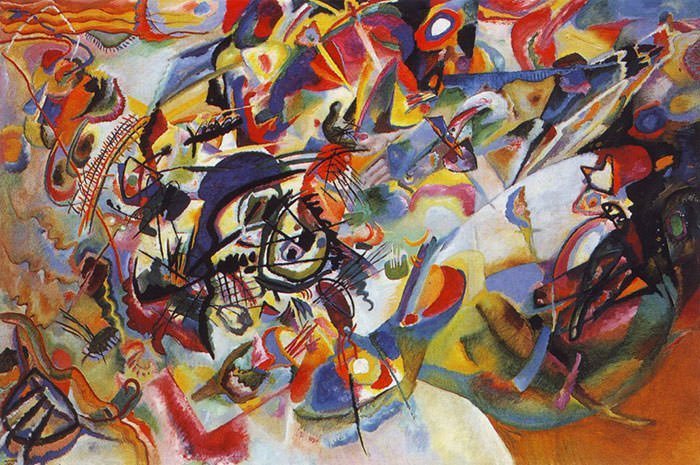
Wassily Kandinsky is considered by many as the “Father of Abstract Art” and he painted some of the earliest works in the genre including what is known as the First Abstract Watercolor. The years 1910 to 1914 are considered the peak of Kandinsky’s career and this painting is cited as the pinnacle of his artistic achievement during the period. He made more studies for this composition than for any other, though he painted the final version in just three days. Composition VII is believed to allude to the apocalyptic themes of Deluge, Last Judgement, Resurrection and Paradise. A swirling hurricane of colors and shapes, it was considered by Kandinsky to be the most complex piece he ever painted and it is one of the most renowned pieces of abstract art ever created.
#2 Number 5, 1948
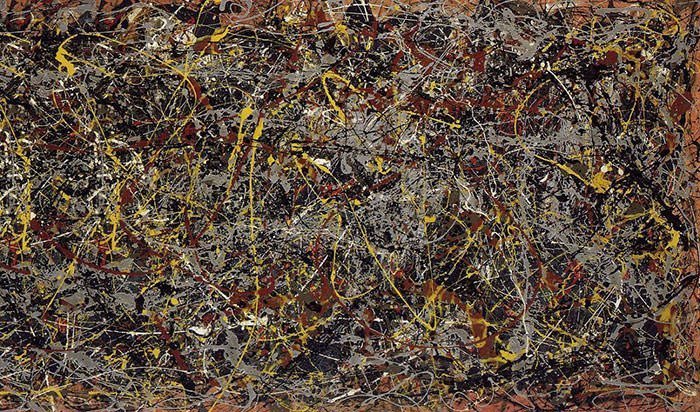
| Location: | Private Collection |
| Artist: | Jackson Pollock |
| Year: | 1948 |
| Genre: | Drip Painting |
Jackson Pollock was the most influential figure of Abstract Expressionism, one of the most important movements in abstract art. He is perhaps the best known abstract artist after Kandinsky. Created on eight by four feet fiberboard, No. 5, 1948 is the most famous as well as the most expensive painting by Jackson Pollock. In November 2006, it created the world record for the highest price paid for a painting when it was sold to an undisclosed buyer for a price of $140 million. As of July 2017, it ranks ninth on the inflation adjusted list of the most expensive paintings ever sold. No. 5, 1948 is considered a prime example of Jackson Pollock’s drip paintings and an epitome of Abstract Expressionism.
#1 The Black Square

| Location: | Tretyakov Gallery, Moscow, Russia |
| Artist: | Kazimir Malevich |
| Year: | 1915 |
| Genre: | Geometric Abstraction |
Kazimir Malevich was the founder of the art movement known as Suprematism, which focused on basic geometric forms, such as circles, squares, lines, and rectangles, and the use of limited range of colors. He is thus a pioneer of geometric abstract art. The Black Square is referred to as the “zero point of painting”, referring to the painting’s historical significance. The work is “monumental not for what Malevich put into pictorial space but for what he took out: bodily experience, the fundamental theme of Western art since the Renaissance”. The Black Square is considered an iconic work of abstract art and it is one of the most famous paintings of the twentieth century.

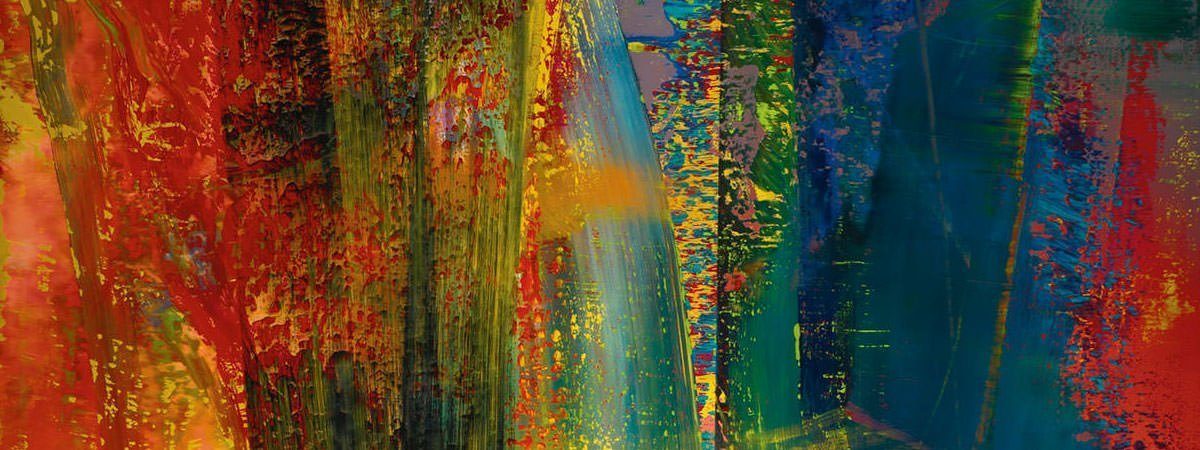
no ryhme nor reason,just a hand painting from your heart.gorgeous.
Abstract is lovely. It’s very informative. Thanks a lot.
Excellent selection of artwork, Great information. Thanks
Thanks for your appreciation.